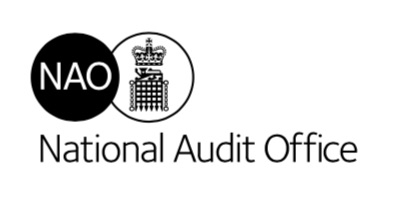The net public sector pension liability has risen to £1,493 billion, making it the single largest liability on the balance sheet, according to the National Audit Office.
Audit chiefs warned there was a risk that continued growth in the liability could cause annual pension costs to become ‘unaffordable’.
In a series of reports released this week, it said the scale of pension costs and liabilities is “particularly striking” when compared with other significant figures in the 2014-15 Whole of Government Accounts.
The documents stated: “The net public sector pension liability of £1,493 billion as at 31 March 2015 was the single largest liability on the balance sheet. It represented 42% of total liabilities and £55,000 per UK household.
“The liability is equivalent to around 81% of gross domestic product (GDP). By comparison, it is over a quarter larger than government borrowing and financing reported in the WGA (£1,175 billion).”
The net public sector pension liability is a continuing long-term commitment that will be payable over a significant number of years.
Officials reported that in 2014-15, the government made pension payments totalling £127 billion, comprising around £38 billion to former public sector employees and £89 billion in state pension benefits. This represented just under a sixth of total government costs.
Public sector pension payments, net of member contributions, were equivalent to 1.6% of GDP and around £1,000 per UK household. Despite these payments, in 2014-15, the government’s net public sector pension liability increased by £190 billion.
A summarised NAO report stated: “The government’s pension liability has grown significantly in the last five years and will continue to grow as public sector employees accrue further pension entitlements.
“As the single largest liability on the balance sheet, there is a risk that continued growth in the liability could cause annual pension costs to become unaffordable. This would have an impact on funding for other public services or would require increases in taxation or borrowing.
“The scale of the pension landscape places an obligation on the Treasury to provide transparency on the range of financial risks the government is exposed to.
“We think the Treasury could more clearly demonstrate its grip on its largest balance sheet risk by providing better information on its management approach and its impact.
“As the pension landscape continues to evolve, the government needs to ensure its assurance and oversight framework is effective and covers the full range of its pension commitments. Without it the government risks making decisions that realise short-term gains but could increase its overall liability in the longer term.”
AJ Bell senior analyst Tom Selby said: “Millions of public sector workers continue to enjoy generous defined benefit pensions which are all but extinct in the private sector. The NAO figures show that liabilities have continued to surge despite the previous Government introducing a series of reforms designed to cut costs.
“Public sector pensions are paid for through general taxation, so rises in the costs of these pensions – primarily caused by increases in life expectancy – place further pressure on the already strained public purse.”

